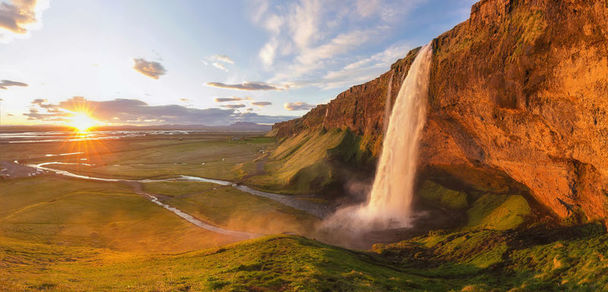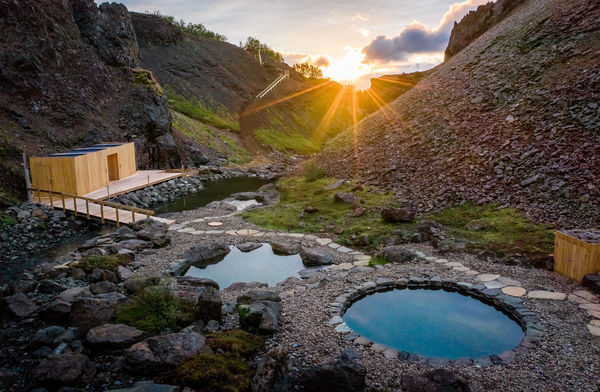Iceland is a country that experiences extreme contrasts throughout the seasons, both in terms of daylight hours and weather conditions. There is no bad time to visit, but the range of activities on offer vary quite significantly depending on when you go, so it’s important to have a sense of what your priorities are when planning your visit – especially if you intend to drive. So, to help you plan your Icelandic adventure, here’s an overview of what to expect throughout the year.
Summer in Iceland
Ideal for: Road trips, hiking, whale watching, puffins
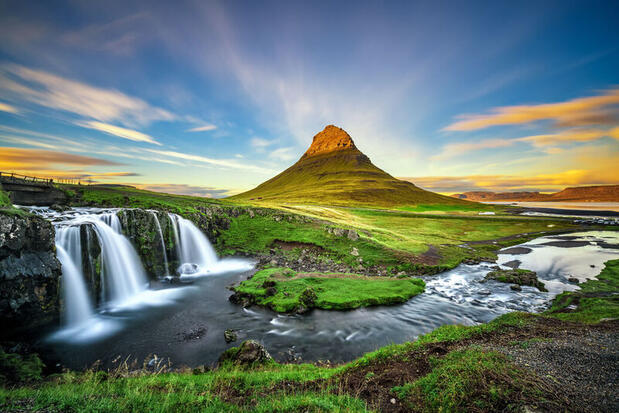
Mount Kirkjufell, Snaefellsnes Peninsula
Summer is the most popular time of year to visit Iceland, when temperatures are at their mildest, the days are at their longest and natural attractions are at their most accessible. On a typical summer’s day, you could expect temperatures in the region of 10-15°C, sometimes even rising above 20°C during especially warm periods.
While summer usually brings about the most favourable weather in Iceland, it’s important to be aware that conditions can change rapidly, so it’s always sensible to pack additional layers and good quality waterproofs – even more so if you’re intending to go hiking in remote areas where shelter may be limited or non-existent.
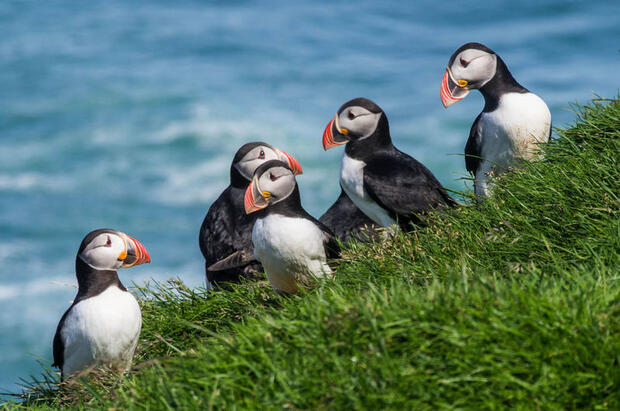
Summer is peak puffin viewing season in Iceland
If you’re planning to hire a car and embark on a road trip in Iceland, summer is an excellent time to do so, as road conditions tend to be at their safest and there’s no need to worry about driving in the dark. Even though Iceland lies just south of the Arctic Circle (with the exception of Grimsey island), the sun barely dips below the horizon during the height of summer, therefore bathing the island in 24/7 daylight from late May to early August. This allows you to really make the most of your time exploring the country’s endlessly dramatic landscapes.
Although whale watching is possible all year round in Iceland, summer is regarded as an ideal time, with calmer seas, long daylight hours and more comfortable temperatures for standing out on deck while you wait to catch a glimpse of these magnificent creatures. Humpbacks, minke whales and orcas are the most commonly observed species, but you may also be fortunate enough to spot sperm whales and blue whales, as well as dolphins. May to August is also the best time of year to spot puffins along the coast of Iceland.
Recommended summer trips:
- Best of South Iceland self-drive
- North Iceland Odyssey
- Highlights of Iceland self-drive
- Reykjavik Summer Adventure
- Iceland's Arctic Coast Way
Autumn in Iceland
Ideal for: Northern Lights, fewer crowds, spectacular colours, cultural festivals
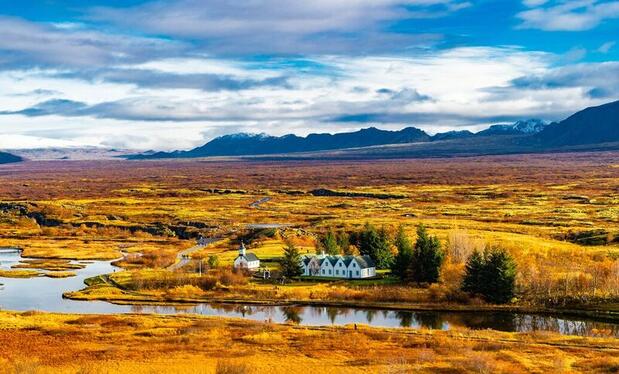
Autumn in Thingvellir National Park
Autumn is perhaps the most underrated time of year to visit Iceland. While many of the famous attractions can become crowded during the peak summer months – particularly in the Golden Circle and South Coast regions – autumn is noticeably quieter. As a result, prices of car hire and hotel accommodation tend to be lower, too.
Temperatures begin to fall into single figures, sometimes dipping close to freezing or even into minus figures at night, while rainfall and heavy winds are common. Driving in Iceland is generally safe in autumn, though as you move into late October and November, daylight hours diminish significantly and there’s a greater likelihood of snow and ice. It’s therefore crucial to check the road conditions and local weather forecasts throughout your trip, and to plan any driving accordingly.
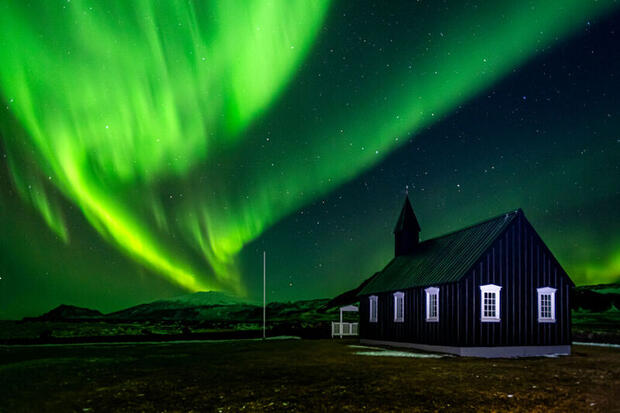
Northern Lights over Búðakirkja, Snaefellsnes Peninsula
Towards the end of August, there’s just enough darkness to see the first glimmers of the Northern Lights, and by the time September rolls around, the aurora hunting season really gets underway. The period around the autumn equinox (late September to early October) is often associated with elevated solar activity, which can result in some truly mesmerising Northern Lights displays.
By the end of November, there’s only around five hours between sunrise and sunset in Reykjavik, so you’ll need to plan your explorations accordingly to make the most of the limited window of daylight. The landscapes morph from lush green to a symphony of gold, amber and copper hues at this time of the year – a spectacular sight to behold.
If you’re planning on staying in or around Reykjavik, it’s worth noting that two of Iceland’s most renowned cultural events take place in autumn; the Reykjavík International Film Festival (late September – early October) and the Iceland Airwaves music festival (early November). Specific dates vary each year, so if you’re hoping to attend either of these, be sure to check their respective websites in advance for further details.
Recommended autumn trips:
Winter in Iceland
Ideal for: Snowmobiling, ice caving, geothermal lagoons, Northern Lights
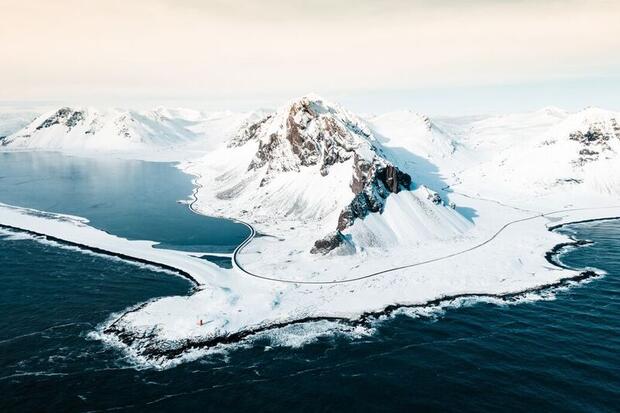
Eystrahorn mountain, Eastfjords
To experience Iceland at its wildest and most otherworldly, nothing beats a winter trip. The landscapes take on a totally different complexion when cloaked in glistening sheets of snow and ice, opening up the possibility for a whole host of thrilling adventures, such as snowmobiling across the mighty Langjökull glacier or delving into the ethereal, crystalline world of the ice caves that lie beneath the Katla volcano. And, of course, the long hours of darkness provide an extended window of opportunity for Northern Lights viewing.
Iceland’s climate is moderated by the Gulf Stream (a warm Atlantic Ocean current), meaning it experiences milder winters than many other places at similar northerly latitudes. Coastal areas are generally mildest, while the further you venture inland, and to higher altitude areas, the more you’ll be exposed to extreme cold. On a typical winter’s day in Reykjavik, you could expect temperatures in the region of -3°C to 3°C. Winter weather in Iceland is very changeable, though; whereas one week, it could be -10°C with heavy snowfall, the next week it could be 5°C and raining. Indeed, it’s not uncommon for snow to come and go in low altitude coastal regions, rather than remaining on the ground for the entirety of winter.
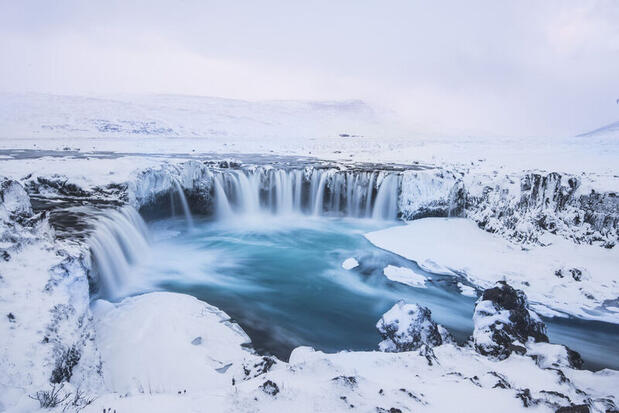
Godafoss, North Iceland
Road closures are common in Iceland in winter due to snow, ice and poor visibility, and conditions are prone to shifting rapidly. For this reason, all cars are fitted with winter tires. Unless you are experienced at driving in challenging winter conditions, we tend to suggest booking organised excursions in winter, which will enable you to enjoy Iceland’s awe-inspiring nature safely, and in the company of experienced guides. Should you decide to drive in Iceland in winter, it’s essential to take extra care and plan your route carefully, always paying close attention to road closures and local weather forecasts.
Although Iceland doesn’t quite experience Polar Night, during the darkest period of winter (mid-to-late December), there’s as little as three or four hours between sunrise (around 11.30am) and sunset (around 2.30-3.30pm), so it’s important to plan your adventures to coincide with this small window of daylight. The sun remains low in the sky in winter in Iceland, casting a beautifully soft glow over the landscapes during the middle of the day. There’s never a bad time for a soak in a geothermal lagoon in Iceland, but bathing in steaming, mineral-rich water is a particularly enjoyable experience when juxtaposed with the crisp winter air.
Recommended winter trips:
- Iceland's Northern Lights & Winter Wonders
- Reykjavik Winter Adventure
- Akureyri Aurora Escape
- Romantic Iceland & the Northern Lights
Spring in Iceland
Ideal for: Photography, wildlife viewing, thundering waterfalls, lower prices
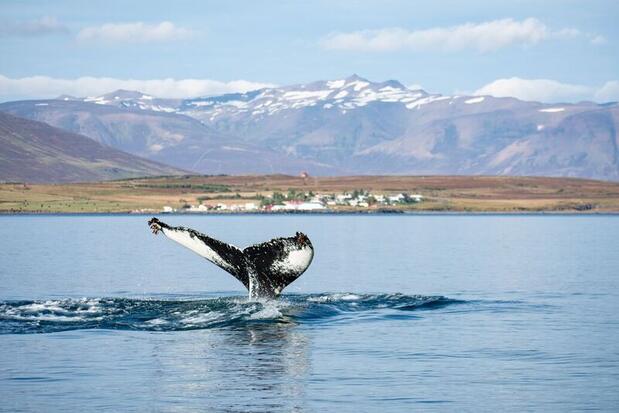
Spring marks the return of migratory whale species in Iceland
Spring in Iceland is very much a transitional time, with unpredictable weather conditions that often vary dramatically between different regions. Early spring can often be more like an extension of winter, with snow and ice still widespread across much of the country and temperatures hovering in single figures for the most part. Road conditions, although better than in winter, can be challenging, with the possibility of heavy snow, high winds and rain – sometimes even all three on the same day.
The Northern Lights can still be seen throughout March and most of April, but by May, the nights are too bright for the aurora to shine through (except for the most powerful displays, which may just about be visible in the first few days of May in the south of Iceland). The difference in daylight hours between early spring and late spring is stark. At the start of March, the sun rises in Reykjavik at around 8.30am and sets at 6.45pm; by the end of May, the sun rises at 3.30am and sets at 11.30pm.

Spring on the Stokksnes Peninsula, East Iceland
Snow will typically remain on the mountains throughout spring and into early summer, but will slowly melt away throughout April and May at lower levels, opening up many hiking trails. Waterfalls gush especially powerfully at this time of year due to the snowmelt, while the landscapes gradually come to life in fresh shades of green. By late May, vibrant purple lupine flowers begin to bloom, making for some wonderful photography opportunities.
Migratory whale species such as humpbacks and minke whales can be seen in large numbers in Iceland in spring, as they return to warmer waters to feed. This is also a good time of year to see seals basking in coastal areas, while puffins tend to arrive in late April or early May. So, if you’re hoping to see some Icelandic wildlife, spring is an excellent bet.
And, as it represents a ‘shoulder’ season before the busier summer months, spring tends to be a more affordable time to visit Iceland.
Recommended spring trips:








